ERC-AdG-2019-TYPARABIC project is funded by the European Research Council (ERC) under the European Union’s Horizon 2020 research and innovation programme, Grant Agreement No 883219.
Early Arabic Printing for the
Arabic-Speaking Christians
Cultural Transfers between Eastern Europe and the Ottoman Near East in the 18th Century
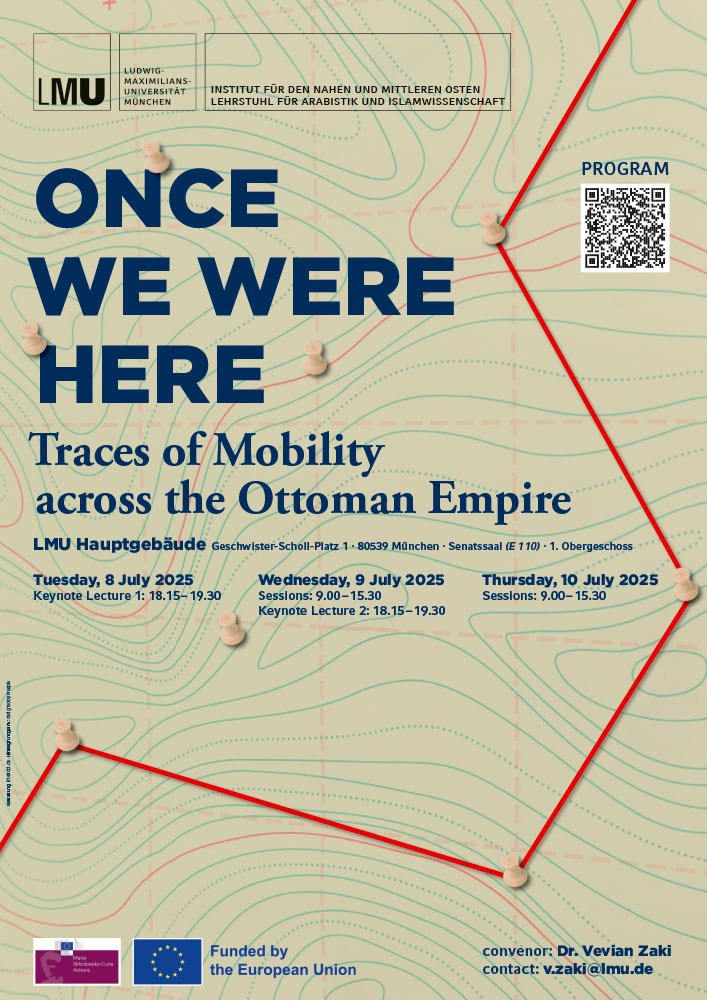
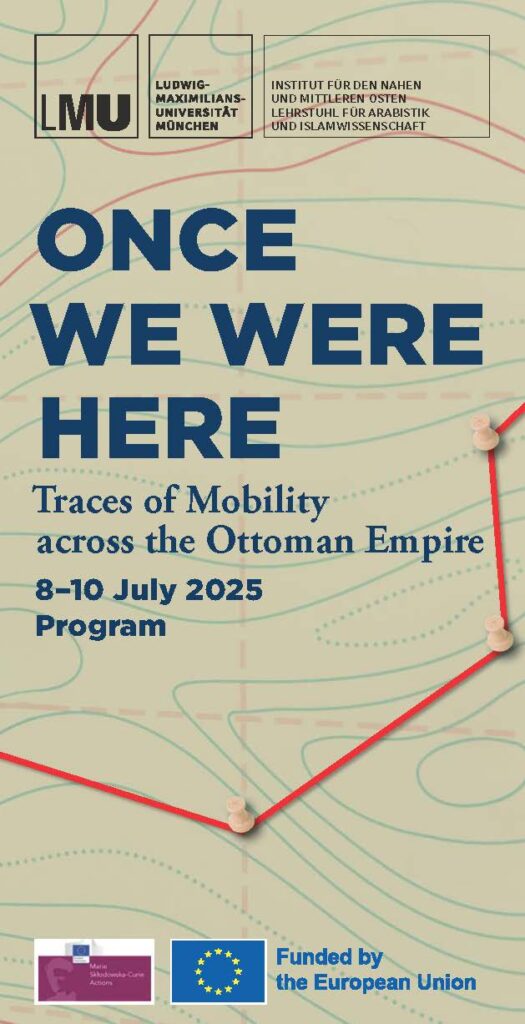
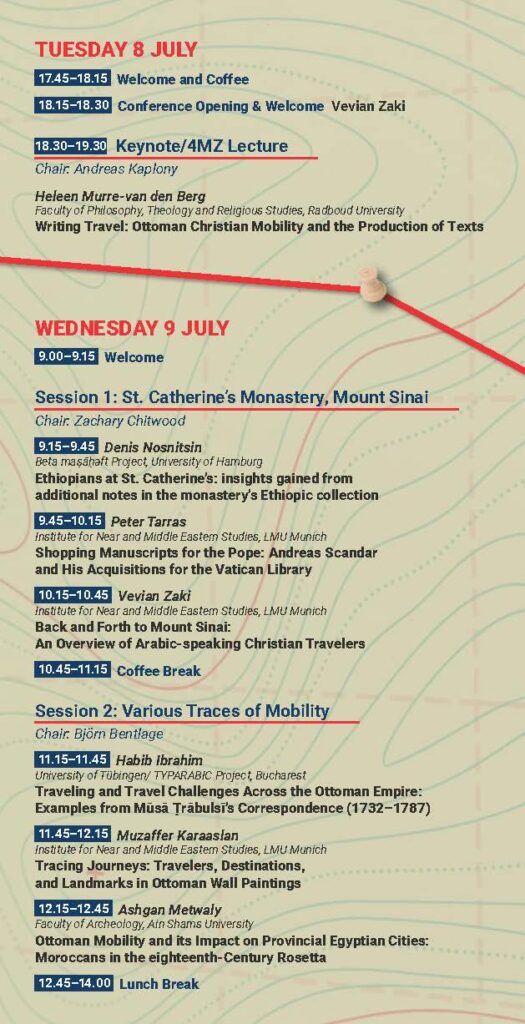
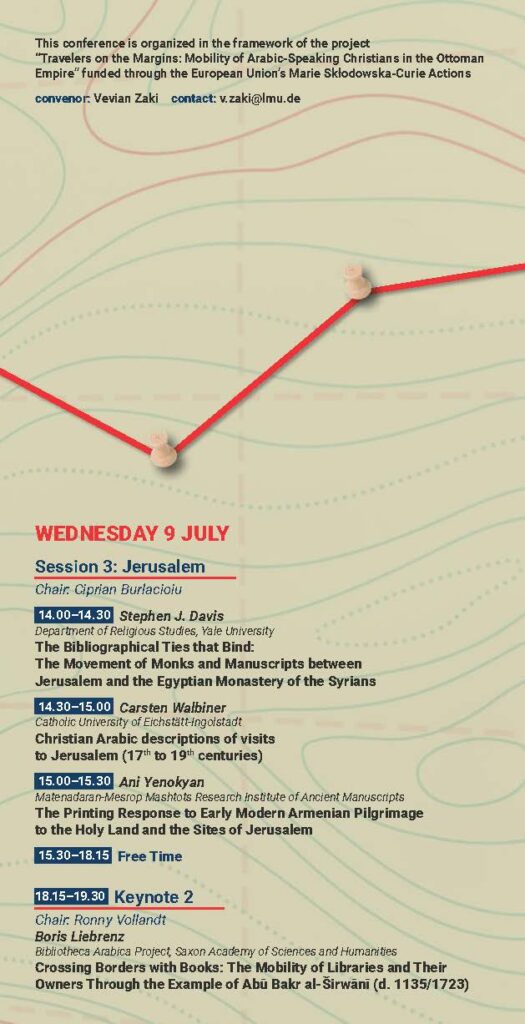
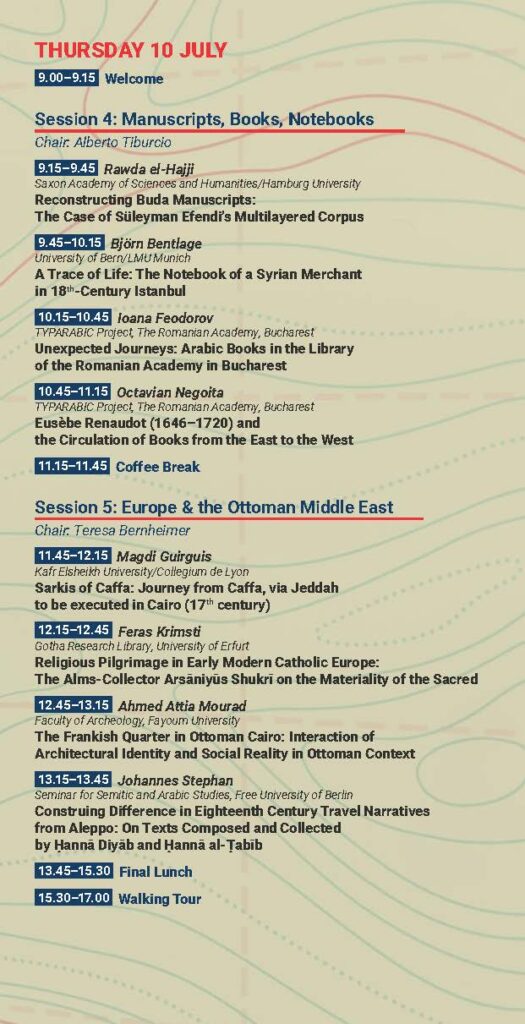

Between June 16-20, 2025, the TYPARABIC project organizes, in collaboration with the Library of the Romanian Academy and the Library of the Holy Synod of the Romanian Patriarchate, the exhibition “The Connections between Romanians and the Eastern Christians during the Times of Antim of Iberia”. The public will be able to see important gems of rare printed editions that shaped the religious and cultural dynamics between the Romanian Principalities and the Christians of the Ottoman Levant.

The next lecture of the Institute of South-East European Studies will take place on Tuesday, 13 May, at 11 a.m. and will be given by Mihai Ţipău (ISEES/TYPARABIC):
Din Cipru la Damasc şi în Ţările Române. Patriarhul Silvestru al Antiohiei (1724-1766).

Entitled “The Role of Italian Presses in Early Arabic Printing. A View from the East”, our conference is organized in partnership with Università Ca’ Foscari of Venice and Istituto Romeno di Cultura e Ricerca Umanistica. The proceedings of the conference will be published as the 9th volume of the EAPE collection by De Gruyter in January 2026.



A new volume of the TYPARABIC project will be released by De Gruyter.




FREE with admission.
Join us for an enlightening afternoon in our auditorium for two scholarly lectures featuring two distinguished researchers, Dr. Ioana Feodorov and Dr. Vera Tchentsova.
Dr. Feodorov and Dr. Tchentsova will explore the fascinating relationship between icons and printed images. Their presentations will also highlight the dynamic interactions between book printers and painters across Eastern Europe and Syria.
Talk Titles:
- Ioana Feodorov, “Traveling Icons and Ornaments of Printed Books from Eastern Europe to Ottoman Syria.”
- Vera Tchentsova, “Portraits of Oriental Patriarchs and Western Engravings (17th-18th Centuries)”
Don’t miss this opportunity to deepen your understanding of this rich cultural topic. We hope to see you there!

Orlin Sabev, senior member on the TYPARABIC team, will contribute this week to an important Oriental studies conference in Cluj-Napoca.

The next lecture of the Institute of South-East European Studies will take place on Tuesday, 25 February, at 11 a.m. and will be given by Alina Kondratiuk (ISEES/TYPARABIC):
The Mother of God with Wings: In Quest of a Model.
Ioana Feodorov will host this meeting.
The conference will take place on the Zoom platform.
https://us02web.zoom.us/j/







Our colleague Mihai Tipau’s Open Access new book is now downloadable from De Gruyter. This is the first monograph on Sylvester of Antioch, a major figure of the Greek Orthodox Church of Antioch, after the 1724 schism.






Saint John of Damascus Institute of Theology is inviting you to a scheduled Zoom meeting. Topic: Historical Journeys and Legacies of the Orthodox Patriarchs of Antioch Time: Dec 4, 2024 02:30 PM Beirut Join Zoom Meeting https://zoom.us/j/6721757988?




Ioana Feodorov and several team members will meet on Friday, November 29, in Rome for the conference convened by PIO. The event will be accompanied by the launch of a collected works volume dedicated to the 1724 schism in the Church of Antioch, to which several team members have contributed. Vera Tchentsova will speak about “The Entangled Histories of the Church of Antioch between Sultans and Popes.”
The TYPARABIC team will be in Râmnicu-Vâlcea next week to hold a special panel at the autumn conference organized by the Archbishopric of Râmnic in honor of the St Hierarch and Martyr Antim the Iberian, whose feast is celebrated on September 27. The team’s contribution comes also in the form of a book exhibition where Arabic early printed books and new sources on Arabic printing will be displayed.
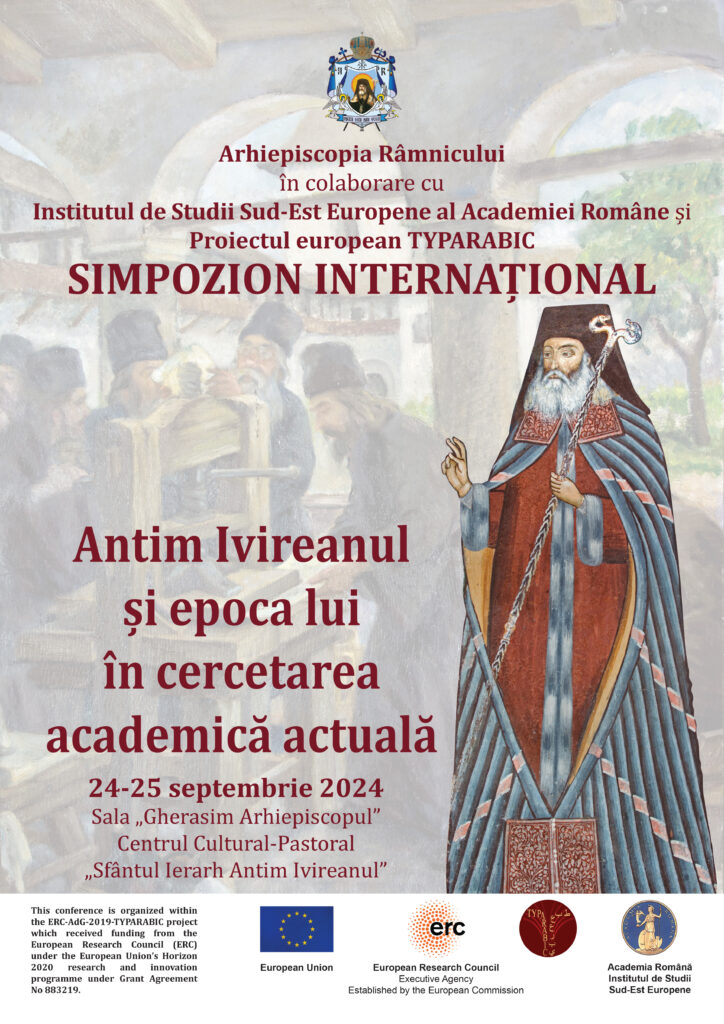


31st Congress of the
Union Européenne des Arabisants et Islamisants (UEAI 31)
“Dynamics between Power and Society in Islam”
Granada, 9-14 September 2024
WEDNESDAY 11 September
SESSION 19
Habib Ibrahim – “The Correspondence of Mūsā Ṭrābulsī: New Insights”
SESSION 27
Ioana Feodorov – “Arabic Printing in Bucharest in Ottoman times for the Greek Orthodox Church of Antioch. Recent Findings”



Ioana Feodorov, PI of the TYPARABIC project, has spent a few days surveying the Arabic sources and corpus books in the National Library of Madrid and the Humanities Library of the Universidad Autonoma de Madrid. She discovered a new, very rare exemplar of a book printed at Khenchara/Shuwayr, known to exist in only three copies worldwide, and established the relevant collections held by these and other libraries in Madrid. This proves to be a rich source for the TYPARABIC project that the team needs to investigate further.






Today, the TYPARABIC project team is celebrating the end of its third year of joint work and the beginning of the fourth. We met virtually and spent an hour reminiscing and making plans for the future – and the last – two years of our collaboration aimed at fulfilling the project tasks. Proud of our achievements, we are looking forward to the challenges ahead. Congratulations, everyone!




Brill has released the first volume of Paul of Aleppo’s journal, covering the opening section on the history of the bishops of Antioch and the travels as a companion of his father, Patriarch Makarios III ibn al-Za’im, in Syria, Constantinople, Moldavia, Wallachia, and the Cossacks’ lands. Authored by Ioana Feodorov, PI of the TYPARABIC project, with Yulia Petrova, Mihai Țipău, and Samuel Noble, the book contains a rich introductory study, the Arabic edition, the English translation, indexes, maps, and figures. Printing is referred to in the section describing the Syrians’ visit to the Kyiv Pechersk Lavra press and discussions about translating and printing important Greek patristic texts.





On May 28, the TYPARABIC team and several partners will convene a study day around the book corpus that the BULAC exhibition presents to the public. Details are available on the poster and program announcement.


On May 27, the BULAC in Paris will open an exhibition co-organized with the TYPARABIC project. The exhibition will display Arabic books printed for the Christians of Ottoman Syria until the end of July.

În zilele de 19 și 20 martie a.c. se va desfășura la Biblioteca Sfântului Sinod (Mănăstirea Antim), Str. Mitropolit Antim Ivireanul nr. 29, Sector 4, București, a treia conferință internațională a proiectului european TYPARABIC condus de dr. Ioana Feodorov, cercetător științific I la Institutul de Studii Sud-Est Europene al Academiei Române (ISSEE). Acest Institut găzduiește primul Advanced Grant acordat de European Research Council (ERC) unei instituții din România pentru domeniul Științe Sociale și Umaniste al programului Horizon 2020, grant în valoare de 2,5 milioane euro (nerambursabili). Grantul este destinat finanțării timp de cinci ani (2021-2026) a proiectului TYPARABIC – Early Arabic printing for the Arab Christians. Cultural transfers between Eastern Europe and the Ottoman Near-East in the 18th century (Primele cărți tipărite în limba arabă pentru creștinii arabi. Transferuri culturale între Europa de Est și Orientul Apropiat otoman în secolul al XVIII-lea). Echipa formată din 18 cercetători (9 români și 9 cetățeni EU și non-EU) studiază un corpus format din 50 de cărți arabe creștine tipărite în secolul al XVIII-lea în Țările Române, Turcia, Siria și Liban. Cercetarea vizează transferul tehnologiei tiparului din Țara Românească spre ținuturile răsăritene guvernate de Poarta Otomană, în beneficiul creștinilor arabofoni. Membrii echipei au publicat în 2022-2023 la editura germană De Gruyter două cărți care cuprind rezultate ale cercetării și zece articole și capitole în alte publicații academice (Open Access). A doua, o colecție de texte rezultate din conferința proiectului din 2022, va fi lansată marți 19 martie la ora 17,15, în cadrul conferinței.

La conferința programată în 19-20 martie a.c., cu tema Către o cultură a cărții tipărite în Europa răsăriteană și Levantul otoman, vor contribui cu lucrări cinci membri ai echipei proiectului, trei cercetători din ISSEE și șapte invitați din România, Italia, Franța și Liban.
Temele care vor fi discutate se referă la dezvoltarea culturală a creștinilor arabofoni în sec. XVI-XIX, tradițiile artistice și viața intelectuală în Orientul otoman și patronajul tiparnițelor din Țările Române de către domnii fanarioți și alți prinți ortodocși. Deschiderea lucrărilor va avea loc marți 19 martie la ora 10,00. Participarea publicului interesat este liberă.
De Gruyter publishing house announces
the publication of the volume
Arabic Printing for the Christians in Ottoman Lands. The East-European Connection
by Ioana Feodorov, the first in the series
Early Arabic Printing in the East (EAPE).
The book is accessible in Open Access
and can be ordered from the editor’s website.

